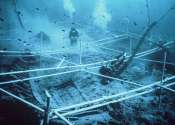Oldest living culture: Our new research shows an Indigenous ritual passed down for 500 generations
We often hear that Aboriginal peoples have been in Australia for 65,000 years, "the oldest living cultures in the world." But what does this mean, given all living peoples on Earth have an ancestry that goes back into the ...









